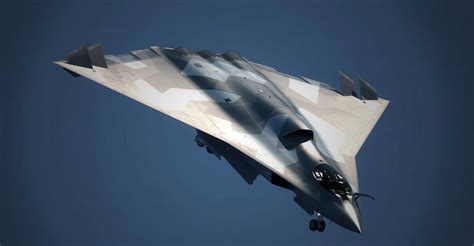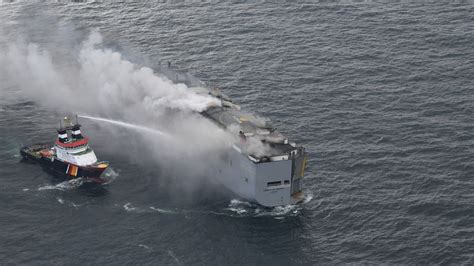
China’s latest stealth fighter, potentially designated the J-36, has been revealed in a clear, head-on photograph, offering the first detailed glimpse of the aircraft’s frontal aspect and confirming earlier speculations about its design and capabilities. The image, circulating widely across social media and defense analysis platforms, indicates a significant advancement in China’s aerospace technology and underscores its ambition to challenge established players in the global stealth aircraft arena.
The photograph, analyzed by defense experts, highlights key features of the J-36, including its stealth shaping, engine inlets, and overall aerodynamic configuration. The aircraft appears to incorporate design elements from both the American F-35 and F-22 fighters, suggesting a blend of technological influences. This unveiling comes amid growing geopolitical tensions in the Indo-Pacific region, adding to the strategic importance of China’s evolving military capabilities.
The emergence of the J-36 marks a critical juncture in China’s military modernization efforts. As the People’s Liberation Army Air Force (PLAAF) continues to expand and enhance its airpower, the introduction of advanced stealth aircraft like the J-36 will likely reshape the balance of power in the region. The aircraft’s capabilities, once fully realized, could provide China with a significant advantage in air superiority and strike missions, further complicating the strategic calculations of its neighbors and the United States.
Detailed Analysis of the J-36’s Design and Features
The newly released photograph of the J-36 offers a wealth of information about its design and potential capabilities. Defense analysts have meticulously examined the image, noting several key features that distinguish it from existing Chinese stealth aircraft and provide insights into its intended role.
One of the most striking aspects of the J-36’s design is its frontal stealth shaping. The aircraft’s nose and fuselage are carefully sculpted to minimize radar cross-section, reducing its detectability by enemy radar systems. This stealth shaping is a crucial element of modern fighter design, allowing the aircraft to penetrate enemy airspace with a reduced risk of detection. The J-36’s design incorporates similar principles to those found in the F-22 Raptor and F-35 Lightning II, both of which are considered among the most advanced stealth fighters in the world.
The engine inlets of the J-36 are another significant feature. These inlets are designed to shield the engine fan blades from radar waves, further reducing the aircraft’s radar cross-section. The inlets also appear to incorporate diverterless supersonic inlets (DSI), a technology that simplifies the design and reduces the weight of the aircraft while maintaining high performance at supersonic speeds. This design choice suggests that the J-36 is intended to operate at high speeds and altitudes, providing it with a tactical advantage in air combat.
The overall aerodynamic configuration of the J-36 also deserves attention. The aircraft features a delta wing design, which provides excellent maneuverability and lift at high speeds. The wings are also swept back to reduce drag and improve supersonic performance. The J-36 also appears to have a relatively large internal weapons bay, allowing it to carry a significant payload of air-to-air and air-to-ground missiles without compromising its stealth characteristics. This internal carriage of weapons is a key feature of modern stealth fighters, as it eliminates the need for external pylons that can increase radar cross-section.
Implications for Regional and Global Security
The emergence of the J-36 has significant implications for regional and global security. The aircraft’s advanced capabilities could potentially shift the balance of power in the Indo-Pacific region, where China is increasingly assertive in its territorial claims and military activities.
The J-36, if fully operational, would provide the PLAAF with a significant advantage in air superiority. Its stealth characteristics would make it difficult for enemy aircraft to detect and engage, while its advanced weapons systems would allow it to strike targets with precision. This capability could be particularly important in scenarios such as a conflict over Taiwan, where China’s airpower would play a critical role.
The introduction of the J-36 also complicates the strategic calculations of the United States and its allies in the region. The U.S. military has long relied on its air superiority to project power and deter aggression. However, the emergence of advanced Chinese stealth fighters like the J-36 could erode this advantage, forcing the U.S. to invest in new technologies and strategies to maintain its dominance in the air.
“The unveiling of the J-36 represents a significant step forward in China’s military modernization efforts,” said Richard Bitzinger, a senior fellow at the S. Rajaratnam School of International Studies in Singapore, as quoted by Yahoo News. “It underscores China’s determination to develop a world-class air force capable of competing with the best in the world.”
The J-36 also has implications for the global arms race. As China continues to develop and deploy advanced military technologies, other countries may feel compelled to do the same. This could lead to a spiral of military spending and increased tensions, making the world a more dangerous place.
Historical Context and China’s Military Modernization
The development of the J-36 is part of a broader effort by China to modernize its military and assert its position as a major global power. Over the past several decades, China has invested heavily in its defense industry, developing a range of advanced weapons systems, including aircraft carriers, submarines, and ballistic missiles.
China’s military modernization efforts have been driven by several factors. First, China has a growing economy and a desire to protect its economic interests around the world. Second, China has a long history of territorial disputes with its neighbors, particularly in the South China Sea. Third, China sees itself as a rising global power and wants to have a military that is capable of projecting power and influence on the world stage.
The PLAAF has been a major beneficiary of China’s military modernization efforts. In recent years, the PLAAF has acquired a range of advanced aircraft, including the J-10, J-11, and J-20 fighters, as well as the H-6K bomber and various types of transport and reconnaissance aircraft. The PLAAF has also invested in advanced air defense systems, such as the S-300 and S-400 surface-to-air missiles.
The development of the J-36 represents the latest milestone in the PLAAF’s modernization efforts. The aircraft’s advanced stealth capabilities and weapons systems would make it a formidable opponent in air combat, further enhancing the PLAAF’s ability to project power and defend China’s interests.
Comparison with Other Stealth Fighters
The J-36 is often compared to other stealth fighters, particularly the American F-22 Raptor and F-35 Lightning II. While there are similarities in design and capabilities, there are also important differences that reflect the unique requirements and priorities of the Chinese military.
The F-22 Raptor is widely considered to be the most advanced air superiority fighter in the world. It is designed to penetrate enemy airspace undetected, engage and destroy enemy aircraft, and then return to base without being detected. The F-22 features advanced stealth shaping, powerful engines, and a sophisticated suite of sensors and weapons. However, the F-22 is also very expensive to operate and maintain, and the U.S. Air Force has only a limited number of them.
The F-35 Lightning II is a multirole fighter designed to perform a variety of missions, including air superiority, strike, and reconnaissance. It is less stealthy than the F-22, but it is more versatile and affordable. The F-35 is also being acquired by a number of U.S. allies, making it a key component of the U.S.’s global military strategy.
The J-36 appears to combine elements of both the F-22 and F-35. Like the F-22, it features advanced stealth shaping and is likely to be optimized for air superiority. However, like the F-35, it may also be designed to perform a variety of missions, including strike and reconnaissance. The J-36 is also likely to be less expensive to operate and maintain than the F-22, making it a more attractive option for the Chinese military.
“The J-36 is clearly designed to compete with the F-22 and F-35,” said Peter Singer, a strategist at New America, as quoted by Yahoo News. “It represents a significant challenge to U.S. airpower in the region.”
Potential Challenges and Future Developments
While the emergence of the J-36 represents a significant achievement for China’s aerospace industry, there are also potential challenges that could hinder its development and deployment.
One challenge is the development of reliable and high-performance engines. China has long struggled to produce engines that are comparable to those used in Western fighters. The J-36 is likely to be powered by a Chinese-made engine, but it remains to be seen whether this engine will be able to provide the aircraft with the performance it needs to compete with the F-22 and F-35.
Another challenge is the integration of advanced sensors and weapons systems. The J-36 will need to be equipped with a sophisticated radar, electronic warfare suite, and weapons systems in order to be effective in combat. China has made significant progress in these areas in recent years, but it still lags behind the U.S. and other Western countries.
Finally, there is the challenge of training pilots and maintenance crews to operate and maintain the J-36. Stealth fighters are complex and demanding aircraft, and it takes years of training to develop the skills needed to operate them effectively. China will need to invest heavily in pilot training and maintenance infrastructure in order to ensure that the J-36 is a valuable asset for the PLAAF.
Despite these challenges, China is likely to continue to invest in the development of the J-36 and other advanced military technologies. The country sees military modernization as essential to its long-term security and economic interests. As China’s economy continues to grow, it is likely to devote even more resources to its military, further enhancing its capabilities and challenging the dominance of the U.S. and other Western powers.
Conclusion
The emergence of the J-36 marks a significant milestone in China’s military modernization efforts. The aircraft’s advanced stealth capabilities and potential weapons systems underscore China’s ambition to become a leading global military power. While challenges remain in terms of engine development, sensor integration, and pilot training, the J-36 represents a credible threat to established players in the global stealth aircraft arena. Its impact on regional and global security dynamics will likely be profound, prompting adjustments in military strategies and defense investments worldwide. The J-36’s unveiling serves as a clear signal of China’s growing aerospace capabilities and its determination to play a more assertive role on the international stage. The details gleaned from the first head-on photograph provide valuable insights into the aircraft’s design and intended role, fueling ongoing discussions and analyses among defense experts and policymakers alike. The J-36 is more than just a new aircraft; it is a symbol of China’s evolving military power and its strategic ambitions. Frequently Asked Questions (FAQ)
1. What is the J-36?
The J-36 is a newly revealed stealth fighter aircraft developed by China. Its existence was previously speculated, but this head-on photograph provides the first clear visual confirmation of its design and capabilities. It is expected to be a significant advancement in China’s air force, potentially rivaling American stealth fighters like the F-22 and F-35.
2. What are the key features of the J-36’s design?
Based on analysis of the photograph, the J-36 features:
- Stealth Shaping: The aircraft’s nose and fuselage are sculpted to minimize radar cross-section, making it harder to detect.
- Engine Inlets: The inlets are designed to shield engine fan blades from radar waves, reducing radar visibility. They likely incorporate diverterless supersonic inlets (DSI) for efficient high-speed performance.
- Aerodynamic Configuration: A delta wing design provides maneuverability and lift at high speeds. Swept-back wings reduce drag for supersonic flight.
- Internal Weapons Bay: A large internal bay allows it to carry air-to-air and air-to-ground missiles without compromising stealth.
These features suggest it’s designed for air superiority and strike missions while maintaining a low radar profile.
3. How does the J-36 compare to the F-22 Raptor and F-35 Lightning II?
The J-36 appears to incorporate design elements from both the American F-22 and F-35. Like the F-22, it emphasizes stealth and air superiority. Similar to the F-35, it may be designed for multiple roles, including strike and reconnaissance. While it aims to compete with these advanced fighters, the specific capabilities and performance metrics will only become fully known with further testing and operational deployment. It is speculated that the J-36 will be less expensive to operate than the F-22.
4. What are the implications of the J-36 for regional and global security?
The J-36’s emergence has significant implications:
- Shifting Regional Balance: It could give China’s air force a significant advantage in the Indo-Pacific region, challenging the air superiority of other nations.
- Complicating U.S. Strategy: The U.S. military, which relies on air dominance, may need to invest in new technologies and strategies to counter the J-36.
- Fueling Arms Race: Other countries may feel compelled to develop or acquire similar advanced military technologies, potentially leading to increased tensions and military spending.
5. What challenges does China face in developing and deploying the J-36?
China faces several challenges:
- Engine Development: Producing reliable and high-performance engines has been a long-standing challenge. The J-36’s engine performance will be crucial for its success.
- Sensor and Weapons Integration: Integrating advanced radar, electronic warfare systems, and weapons is essential. While progress has been made, China still lags behind some Western nations.
- Pilot and Maintenance Training: Operating and maintaining stealth fighters requires extensive training. China needs to invest in infrastructure and training programs to effectively utilize the J-36.
Despite these challenges, China is expected to continue investing heavily in its military modernization efforts, including the J-36.









